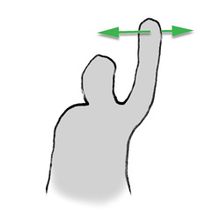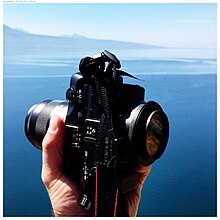The topic of this article may not meet Wikipedia's general notability guideline .(March 2025) |
Dualphotography is the photography technique of simultaneously taking two photographs of one scene, thus capturing a scene from both sides of the photographic device at once. In other words, it is the practice of creating a photographic scene from two opposing or complementary sides of a single real-world situation. Dualphotography can be used to capture both the subject and the photographer simultaneously, or both sides of a geographical place at once, thus adding a supplementary narrative layer to that of a single image.
Contents

Specific types of dualphotography include back-to-back photography and portal-plane photography. Stereoscopy is a specific kind of dualphotography, and while it is technically similar and would be compatible with the term, the latter is seldom used for it.














